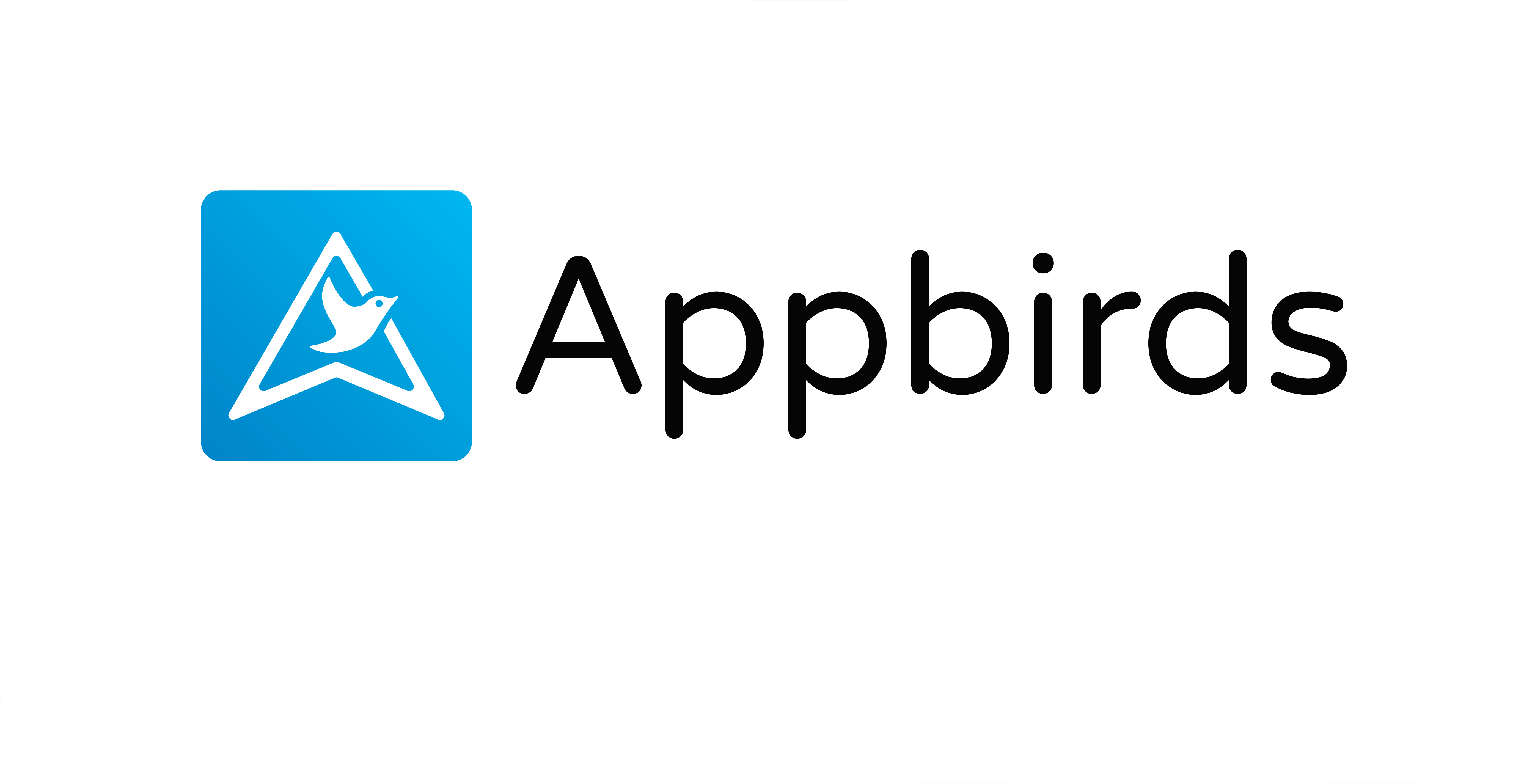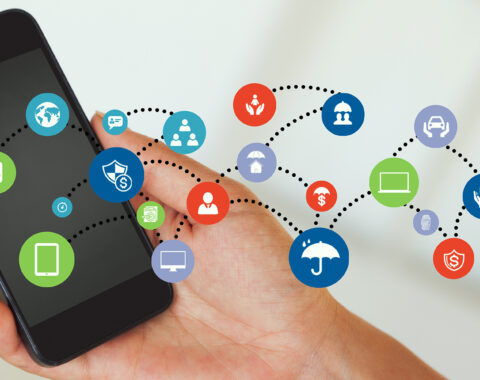The majority of people nowadays would have a hard time imagining using their smartphone “only for calls” during the day. The majority of mobile devices have moved far beyond simple instant messaging and phone call functions that were their original purpose. Today, even very basic mobile phones offer a platform to house a variety of everyday applications. It converts thousands of people into app users who are grateful for access to more and more apps. They improve life whether they are simple or complex, helpful or entertaining, minimalist or exploding with colorful and eye-catching elements, practical or pleasant, or just what the user needs them to be. Users may perform a wide range of tasks just on their mobile phones thanks to the variety of apps that are currently available.
Most users have no idea how many people are involved in performing regular tasks like setting an alarm for tomorrow, budgeting for the upcoming week, or messaging their mother a picture.
Let’s take a step further today and outline the entire process of developing an ios mobile application. Gives information from developing the idea to publishing it on the App Store.
Making a mobile application out of thin air is a complex process with its own unique peculiarities and features in every specific scenario, just as in any creative process. However, several typical creative stages for this process can be identified based on appbird ‘s vast experience in developing a variety of applications, such as the following:
12 Steps to Develop a Successful IOS Mobile Application
- setting the task and initial scope of works
- estimation
- user/market research
- UX wireframing
- prototyping
- UI design
- animation
- software architecture planning
- iOS development
- testing
- release
- updates.
Although the stages are listed in order, this does not mean that each new phase begins after the previous one is finished. Since so many processes and stages are interconnected, even those that are not mentioned in the list, it is difficult to believe that there would be this kind of linear dependence. Additionally, some of them, such as testing or estimation, are mentioned intermittently while being applied to the entire process of developing an app. Let’s follow this process step by step to understand how a simple concept becomes a useful mobile application.
Setting the task and initial scope of works
The task point serves as the starting point for all processes of design and development. The design and development team should now gather as much information as possible from the client to identify the best route ahead. Without a clear destination in mind, a person walking may end up going nowhere. The same principle applies to product design. In order to achieve the desired outcome, the journey should begin with clearly defined objectives. It doesn’t mean that the objectives should remain exactly the same at the end of the journey; instead, the proper level of flexibility needs to be established because the goals can change somewhat during the development, research, and testing phases. However, the creative process can easily develop into a mess if the general goals are not established at the beginning.
Another important piece of advice is to try to understand the thoughts and motivations behind your clients’ demands when interacting with them. This is something we have learned from years of experience. Understanding why a customer prefers specific colors, shapes, or transitions will make it easier for you to justify (if necessary) multiple options of knowing these concepts that would produce the desired result while also being user-friendly and thoughtfully consuming resources or aiding interactions.

More information from the client will help you set the correct action to take. Design briefs, calls, Skype conferences, Slack conversations, brainstorming sessions, and mood boards can all serve as a stronger base for successful work.
The following information should be gathered at this stage:
- The characteristics of the product and its USP
- Target audience
- Geographical focus (if available)
- The keywords that the company uses to describe itself
- The design and functionality that clients consider important in the app
- Preferred unique features (color palette, general style, special features, connection with other already existing digital products or brand strategy, etc.)
- Possible platforms, tools, and surfaces where the app will be used
- The requirement for consistency with existing corporate identity (if available)
- Processing of data, the need for server-side technology, and some other technologies
- Particular preferences
Estimation
Business analysts and sales managers can give the client a preliminary estimate of the project’s duration and associated costs using the information gathered at the previous stage. As in any creative process, it is virtually difficult to establish a single estimate that will remain constant throughout the entire project. This is the information that needs to be examined and back to after each stage of the design process. Certain products may be pretty simple and have a clear structure. It has fewer screens or elements than others, in which case estimating will be accurate from the very beginning of processing the client’s information and requirements.

However, the probability of estimating reviews and modifications increases with project complexity. One additional crucial point to note is that these reviews may not necessarily indicate rising costs or lead times, as designers and developers can uncover ways to optimize technology and design solutions during the creative process, possibly even decreasing the initial estimate.
In full-stack teams, this procedure is almost perfect since business analysts can include designers and developers in the evaluation process from the very beginning of analysis and estimation, allowing for more accurate and realistic time and cost planning. Additionally, experts taking part in the discussion can offer a wealth of knowledge and experience on technical aspects and factors affecting the amount of time and resources required for the design and development of the app.
User/market research
This is the stage where the UI/UX designer begins the route by digging more deeply into the environment in which the future application will function, based on the given task and goals. User research and market research are typically conducted at the same time throughout the research stage.
Give a competitive edge to your startup business with AppBirds mobile app development services
User research contains diving deep into the specifics of the primary target audience to understand their preferences and psychological quirks, the impact of various elements such as colors, stylistic features, and interaction logic on the experiences and emotions of the defined group, the sources of information, and innovative performance strategies that could engage users and encourage them to take part. Exploring the marketplace through marketing research involves looking at it primarily from the viewpoint of the innovative strategies implemented by competitors. Visual design aims to develop a distinctive and recognizable style that will set the product apart from the competition and attract potential customers.

David Ogilvy, a well-known advertising expert, highlighted the vital role that research provides in achieving successful outcomes: “Advertising people who neglect research are as dangerous as generals who ignore decodes of enemy signals.” Even if methods, objectives, and technologies have evolved over time, research continues to play a crucial role in the community. Designers face the possibility of failing this task if they skip the research phase and rely solely on their creative intuition, experience, and talent because they won’t be aware of the app’s operating requirements and won’t be able to create it effectively, is user-friendly, and is original.
UX Wireframing
The general structure of the designed application or website is created during this phase. Typically, it is done using a collection of schematic screens or pages with a low to medium amount of detail. The goal of this stage is to provide a clear and organized structure for every layout, transition, and interaction based on the issues and problems that the product will relieve for the user.
For example, when we consider building a house, we typically consider the actual physical construction process rather than the several projects, designs, and calculations that were prepared on paper. Yes, it is physically conceivable to build a house without a plan and to create an interface out of thin air. However, in this case, you shouldn’t be shocked if the house one-day cracks and falls for no obvious cause, just as the app, which actually looks wonderful and stylish, won’t attract any devoted customers. Take your time for careful planning and project if you want to have a trustworthy house, a durable mechanism, a powerful application, or a highly functional website. Your time won’t be wasted; on the opposite, it will be saved from being used to rebuild the product and to try to figure out why it doesn’t operate properly.

The UX part of the design process aims to achieve that. User research, competition research, and an analysis of all the collected data should be the primary foundations of the UX wireframing stage. In the end, it produces a clear scheme whose complexity depends on the usefulness of the product, reflects every system of transitions and interactions, and places every element of the user interface according to how best to use it. Wireframing can sometimes be completed with pencil sketches or initial draughts, but it is preferable to use specialized tools and software that optimize the design process and boost speed.
Prototyping
The sample model of the product that allows testing to determine whether the solutions and choices made about the product are effective is the original meaning of the term “prototype.” The final product should not be compared to a prototype because they are not that. Their primary goal is to make it possible for a designer, a customer, and a user to evaluate the accuracy and suitability of the design solutions.
In the last several years, the importance of prototypes has risen in the fields of the app and web design. In reality, it’s simple to explain since even a low-fidelity prototype brings the designer, customer, and tester much closer to how the final product will look and work than even the most detailed planning, diagrams, and wireframes do. Obviously, this does not imply that wireframes and schemes could be done away with since they are crucial to the process of developing design solutions. A prototype will be quite useful when you want to evaluate its effectiveness and ensure that nothing was missed throughout the design process.

This approach is ineffectual in practice because many customers view the prototype as being extremely similar to the actual product design, or “UI in action.” As a transitional phase between UX design and UI design, prototyping is considerably more effective and beneficial.
Instead of testing and developing the functional features of the program, the prototypes on the UI stage might be made to showcase how the application generally looks. And here is the trap where the confusion is likely to occur. In most circumstances, prototyping every aspect of the final UI stage is not as rational as it might seem. It will take too much time, so from this point, it would be preferable to use that time to code a demo version.
Furthermore, usability should be thoroughly examined early on in the UX process because, once a lot of work on the UI has been completed, it will be much more difficult to replace ineffective solutions. Prototyping for both UI and UX would definitely be fantastic, but not all designers and clients are willing to devote so much time to design activities. Instead, they prefer to test and improve on designs more quickly and affordably.
UI (User Interface) Design
The user interface is actually a finalized interactive field in which the user interacts with the product. It includes all the tools for increasing usability and satisfying target users’ needs and wishes. All the features of visual perception, as well as sound and tactile feelings influencing the product use and interaction with it, should be analyzed and optimized here to the purpose of the app or a website designed. For example, such aspects as color palette, types and fonts, shapes and forms, illustration and animation, and so on and so forth are able to affect the performance of the final product greatly in both positive and negative ways.
UX research and wireframing are generally concerned with the functionality of the website or application, whereas UI is concerned with how it appears. Both of these stages focus on creating successful interactions, however, the UX stage focuses more on concepts, connections, and user behavior while the UI stage gives all the concepts a visual representation. It means that, in a perfect world, the designer would focus first on the layout, making it more effective, well-planned, obvious, and simple to use. Without this crucial effort, you run the very real risk of making the user interface a complete mess.

The designer begins the UI design phase after the UX portion is validated with a prototype, and approved, and the concept of layout, transitions, and features are accepted. At this point, the skin and bones of your product’s newborn heart and brain are being added. Here, the product receives its authentic color scheme, forms, layout details, styles, animation elements, etc.
UX wireframing and UI design processes should complement one another and stick to the same strategy because all UI solutions have a direct impact on whether a user has a positive or negative experience. Otherwise, the effective solutions from one stage won’t work in the other.
Best UI Design Tools for the Next Generation
Animation
When discussing the details and advantages of interface animation used in mobile apps, we pointed out that the most effective approach is to take this into consideration throughout all the creative processes. The ideal time to put it into effect, however, will be when UI design is mostly finished and a broad stylistic approach has been decided upon.
Like everything that is put into the interface and process of interaction with it, the animation must be a functional element, not just a decor. Considering motion elements while planning the user journey around the digital product, the designer should deeply analyze its potential for increasing usability, utility, and desirability of the product before making a decision to apply it in the layout or transitions. Animation in UI requires a thoughtful approach and always needs to have a clear purpose set behind it. The advantages and utility of using it in the interaction process have to be obvious and outweigh possible disadvantages.
Designers hand over the assets to developers, who will work their magic to bring them to life, once this step is complete and the visual details have been confirmed and agreed upon. Additionally, it is a good time to look over the estimation once more and plan the development sprints in detail based on a thorough design.
Software Architecture Planning
One significant feature is that one of the most crucial components of a mobile application is scalability. Software architecture planning may occur concurrently with design. This is a difficult procedure that frequently involves many iterations and a continuous feedback loop between the development team and the design team. The primary objective of architectural planning is to develop a useful and comprehensive blueprint for the app’s software architecture (front-end and back-end). The most effective technical and technological solutions are chosen at this stage in order to actually create the app and keep it functional. The choices are based on a number of variables, including the nature of the product and the data it processes, the complexity of the design solutions, the need to save data, the availability of log-in functionality, and others. Back-end development creates the connection between the app and the web and facilitates data synchronization in both directions.
IOS Mobile Application development
The actual coding of the program is carried out in Xcode, an efficient and adaptable platform with a wide range of features for iOS mobile application developers. Xcode is described as “Apple’s integrated development environment” on the official website (IDE). You can create apps for the iPad, iPhone, Apple Watch, Apple TV, and Mac using Xcode. With the help of Xcode, you can handle every step of the app development process, from creation to testing, optimization, and submission to the App Store.
All the tools needed to create an iOS mobile application are in Xcode, which can only be used on Macs. It cannot be started on a Windows or Linux computer using any official methods. This means that if a person doesn’t already own a Mac but wants to create apps for the iPhone, iPad, Apple Watch, Apple TV, and Mac, they will need to get one.

Objective-C and Swift are the two fundamental and most widely used programming languages for iOS mobile application development. Since 2014, Xcode has used the Swift programming language more frequently than Objective-C, which is a challenging language for developers to learn and develop. Nevertheless, Objective-C is a strong fit for older iPhone hardware that had less RAM and slower processes. It is also a good fit for maintaining and updating apps that were initially made in that hardware. Swift is faster when it comes to code, more user-friendly, shorter, and more secure. It also keeps up with new hardware. Xcode 8 and the iOS 10 SDK, both available from Apple, are required for building iOS 10 apps. The Swift language and SDK have seen significant changes in this Xcode version.
In this stage of developing a mobile app, iOS mobile application developers consider the program’s design, write the code, include functionality into the UI, edit the source code, debug the app, and then export it to the App Store. Additionally, this phase calls for the creation of unit tests and the execution of integration testing. One of Xcode’s features, the Interface Builder, gives developers a visual way to put the client-side code together rather than having to do it by hand. With this tool, you can drag & drop various visual controls into the app code. Based on the size of the user’s screen, AutoLayout aids in controlling how the app is presented. While Preview Mode provides an initial glimpse of what the app will look like when it is finished, Storyboard allows developers to see what each screen of the app actually looks like.
Even though it is theoretically possible to do all of the codings inside of Xcode, many ios mobile application developers believe that a text editor is generally necessary. If programmers don’t use a text editor that supports all relevant programming syntaxes, handling lengthy and complex codes might become very confusing.
In most cases, the front-end server-side components of an app, such as the database, APIs, middleware, etc, are coded, integrated, and connected to while another portion of the development team is developing the client-side part.
It should be remembered that the complexity and urgency of the project come first when planning the process and the number of individuals involved in the development process. One iOS mobile application developer might be able to build every part of the app’s software architecture for smaller projects. At least a few programmers with knowledge of software architecture and strong competence in both client-side and server-side development should be involved in multilayered complex projects.
Making a completely functional software that is scalable and integrated into the necessary server-side components, such as a database, APIs, and other associated infrastructure it requires to run is the primary responsibility of this phase. Clients can buy a Backend as a Service (BaaS) software bundle or other products if they are not prepared to create the original server-side infrastructure. The bundles come with a number of storage capabilities and possibilities, but they aren’t fully “turn-key” and frequently don’t offer the option of in-depth and extensive analytics. It suggests that the client needs a developer to integrate it into the app who is familiar with back-end engineering.
Testing
William A. Foster once said, “Quality is never a mistake; it is always the outcome of high intention, genuine effort, intelligent guidance, and flawless execution; it reflects the wise choice among many possibilities”. And when it comes to digital product testing, this is simply true.
One of the most important stages of the entire app design and development lifecycle is testing, which can help identify bugs before the ios mobile application is released to actual users. The App Store won’t accept any apps with compilation errors or defects, therefore there are no chances for those problems in the mobile app that is ready for submission. Even if an app seems promising and interesting, people typically stop using it if it has functional issues. If an app functions appropriately and efficiently, meeting the expectations of the target audience and resolving issues for them, it can be successful for eCommerce, business, advertising, and other reasons.
Testing does not mean that developers do not deliver the best possible product. To provide an example, it is not true to suggest that journalists and writers lack talent and qualifications just because every book, magazine, or newspaper issue is reviewed by an editor. It works the same way for the design and development of mobile apps. Varied specialists have different goals and skills in the process to boost general productivity and efficiency. Even if the developers did an excellent job and made no mistakes, testing involves more than just looking for problems. On the opposite, it helps determine the app’s quality and identifies ways to enhance it through actual interactions.
Because it is efficient, affordable, and reliable, automated testing is becoming increasingly popular. The iOS Simulator and other testing tools, such as Appium, Frank, Calabash, and others, can be used to run the app through testing and identify any problems that need to be fixed. Small bugs are prevented from growing into larger problems later on through continuous testing throughout the entire process.
A developer will often test an app screen by screen on a device or in the iOS Simulator of Xcode to make sure there are no bugs or issues and everything functions as expected. Debugging and fixing may be done simply in Xcode.
The app should be tested in all aspects. Since screen resolution, CPUs, battery life, and memory will vary amongst devices (iPhone, iWatch, iPad, iPod, etc.), developers will need to test the app on each one to see how it performs. Additionally, they test UX (How user-friendly is it? ), handling and download speed (Do all the functions function correctly? ), and functionality (Do all the functions work well?). Developers examine crash reports in addition to the previously identified problems to determine what needs to be fixed.
Here are some types of testing that are used during the mobile app development process:
Functional testing:
The most fundamental test for any application is to make sure that it meets the requirements and that no functions are missed during the interaction.
Performance testing:
Network performance, server performance, and client application performance are all included in this type. For example, it tests the app’s performance specifications and behavior under various circumstances, including low battery, poor network coverage, low memory availability, etc.
Memory testing:
This kind of test makes sure that every application maintains optimal memory use while the user is browsing.
Interruption testing:
During usage, an app may face a variety of interruptions, such as incoming calls or network failures and recovery. This type of testing shows how the app will behave in these situations.
The following are the typical interruptions:
- Calls, SMS, and MMS, both incoming and outgoing
- and various notifications;
- Low memory warning
- Inserting or removing cables
- Network failure or recovery
- Toggle media player
- Device power cycling, low battery alerts, etc.
Security testing:
The app’s vulnerability to hacking, authentication and authorization procedures, data security, session management, and other security standards are all assessed.
Usability testing:
It is carried out from the early stages of app development to verify if the app achieves the established objectives and tasks obtaining a satisfactory response from users. According to Apple’s Human Factors Design representative Joyce Lee, “Usability answers the question of whether a user can achieve their goal.”
Submitting / Release
The day when the app is usable and ready to be shared with users finally arrives. It must join the iOS mobile application developer program in order to be submitted to the App Store. Before an app can go live, Apple has the right to examine and approve it. In any event, it is advised to allow a week or so for Apple to evaluate and approve the information. If the app is utilized for business purposes, there will be an additional step to the submission that involves completing brief surveys.
This step will require independent clearance, which is typically expected within a day. A few stages are involved in releasing an app to the App Store, such as configuring the code, creating a profile and listing, and submitting it to Xcode for certification. Knowing the processes and what to expect is helpful for an iOS developer because it may require a few fixes and resubmissions.
As you can see, the procedure a mobile application goes through is pretty complex and involves a number of processes to guarantee its usability, visual quality, and level of performance. In the current tech-driven era, the iOS field is unique and extremely competitive. AppBirds can be your ideal partner for developing the best iOS mobile application that gives companies a competitive edge in the global market, Delivering modern yet robust iOS mobile application Development solutions, Transforming your thoughts to reality, and helping you succeed in the always-developing marketplace. We have decades of expertise creating applications that speak for themselves and are powered by modern functionality. While working with the top iPhone app development company, amaze your customers. Connect with one of our talented developers to go through your project ideas; Leave your requirement here, and we’ll respond right away!
Also Read: Better choice for Android development: Kotlin or Java



